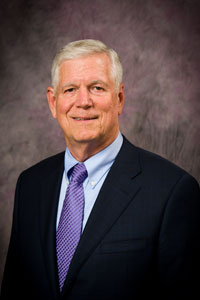May 3, 2018
Update on budget model redesign and guiding principles
Submitted by President Richard Myers

Dear faculty and staff,
In a February letter to the university, I shared an update on the redesign of our historic budget model and an adjusted project timeline. At the time, we were in the discovery phase of this initiative, learning from others who have been through a budget model change, and beginning to identify cost pool drivers for distributing institutional costs. Today, I want to provide an update as we move from the discovery to the design phase of this project and invite you to comment on the guiding principles drafted by the steering committee.
Over the past six weeks, members of the steering committee visited Iowa State University, Auburn University and the Ohio State University. They saw a range of incentives-based budget models and discussed lessons learned.
In April, two University of Arizona colleagues visited the Manhattan campus to share their experiences implementing a new budget model. Andrew Comrie, former provost, and Jim Florian, associate vice provost, institutional analysis, gave their time generously over two days to meet with cabinet, Deans Council, the Budget Modernization Steering Committee, central budget and administrative staff, and the core executive team.
Insights gained through all these visits were instructive and we appreciate the generosity of those colleagues assisting from these institutions. While each university has a model unique to their institution, there were common themes from each one:
- Keep it simple.
- Accurate and timely data is critical.
- A learning or shadow year is important.
- No model is perfect.
- Phase in the change.
- Build in a regular review period.
- Find a way to incentivize research (RSCAD) in the model.
- Training will be necessary for vice presidents, deans, department heads, directors, budget/fiscal officers and others with budget responsibilities.
- You can never communicate too much.
One of the most important messages was to identify guiding principles to drive the budget redesign.
In that spirit, the steering committee proposes nine key principles to underlie our new K-State budget model:
- Common good
- Fairness
- Simplicity
- Transparency
- Authority aligned with responsibility and accountability
- Academic quality, innovation, and efficiency
- Stewardship
- Smooth transition
- Adaptability
As noted by the steering committee, "A new budget model should reflect and reinforce our shared values and priorities. Such principles guide us to stay focused on our values as we design, test and implement a new budget model."
We invite you to review the guiding principles draft document and provide your feedback by completing a brief survey by Friday, May 18. The survey also provides an opportunity to share additional suggestions, questions or concerns. Responses will be compiled and shared with the steering committee and core executive team. The goal is to finalize the guiding principles by the end of May.
The seven cost pool teams, including 45 K-Staters across the university, spent the month of March identifying cost drivers for libraries, academic administration, general administration, research support, utilities and facilities, student services, and information technology.
Their recommendations were presented to the core executive team in early April. We will consider them in early May to determine cost pool metrics for the budget model design phase. The teams did an impressive job, and I thank them for their work. More information about the cost pool recommendations will be coming soon.
What’s next? We are looking at four distinct phases to the multi-year effort to design and implement a new budget model. We started with discovery phase and are moving into the design phase. Next will come a learning phase, and then the multi-year implementation phase.
During the recently completed discovery phase, we learned from others, developed cost pool recommendations, established a project website, drafted guiding principles and adjusted our timeline.
We are entering the design phase (April –July) when the initial metrics, formulas and model for testing in FY 19 will be determined. The guiding principles will be completed, key data and terminology defined, FAQs developed, communications accelerated, communication and training strategies put in place, and a work plan for the learning year developed.
The learning phase or shadow year (August 2018-June 2019) begins with a campus rollout at the University Leadership Retreat on Aug. 16, followed by an open forum for faculty, staff and students. We plan to host the forum during the first two weeks of the fall semester. The rollout also will include meetings with deans, vice presidents, unit leaders, business officers and governance councils.
During the shadow year, model comparisons will be provided to the deans and vice presidents for each term in parallel to the actual FY 19 budget. We will host learning and dialogue sessions throughout the year, provide regular updates to the campus community, and develop and evaluate key processes and the model. Based on what we learn during the year, we will finalize the model to begin a multi-year phased implementation in July 2019.
In closing, I know some of you are ready for a change to our historic budget model, some are ambivalent, and some are anxious, or even opposed. That is always the case when we take on a transformative project. Let's work together and do this well for the long-term good of the university and our K-State community.
Sincerely,
Richard B. Myers
President
